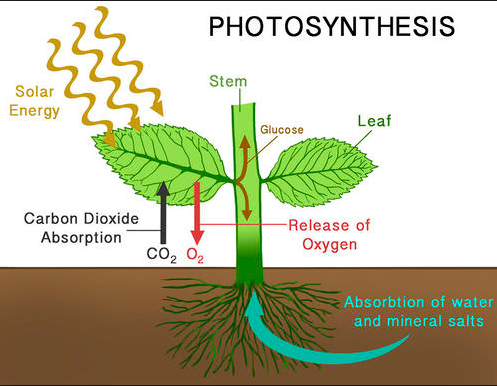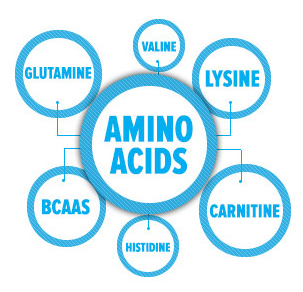Plants have developed the amazing ability to directly harness the energy from the sun, an incredibly effective way of feeding themselves. All plant leaves are natural solar panels, far more efficient than our own technology, developed over hundreds of millions of years. The conversion of light into energy takes place within the green pigment in the leaf known as chlorophyll. Water is moved from the roots to the leaves through the xylem tissues while carbon dioxide is collected by specialized cells on the undersides of leaves called stomata. As a plant draws in air through the stomata it is losing water to transpiration. At a certain temperature, water loss is so great that a plant will shut down photosynthesis in order to avoid the water loss. This is a good reason to control air temperature in your garden.
 The reaction of light energy and carbon dioxide within plants leaves creates simple sugars, carbohydrates, for energy. The reaction involves 6 molecules of water and 6 molecules of carbon dioxide which combine with solar energy to a molecule of glucose and 6 molecules of oxygen. This oxygen is released back into the air which is good for us and is one of the reasons why plants are essential for our well being.
The reaction of light energy and carbon dioxide within plants leaves creates simple sugars, carbohydrates, for energy. The reaction involves 6 molecules of water and 6 molecules of carbon dioxide which combine with solar energy to a molecule of glucose and 6 molecules of oxygen. This oxygen is released back into the air which is good for us and is one of the reasons why plants are essential for our well being.
Plants use their sugar energy to grow and break down carbohydrates in the presence of oxygen within cells. This process releases a certain amount of carbon dioxide and lots of usable energy. The buildup of carbon dioxide is generally released into the environment at night. The energy created by this process is used to drive the creation of starches, proteins, enzymes, growth regulators and DNA/RNA structures.
There are 16 essential elements for plant growth, some of which can be taken from the air or water, such as carbon, oxygen and hydrogen. Even nitrogen can be taken from the air if the proper biology is active in the soil. Other nutrients can be taken from the soil although generally a grower must supplement a wide variety of nutrients to get plants growing well, especially in soilless and water based systems. This is because they lack the mineralization found in true soil.
Plants require macro nutrients such as Nitrogen, Phosphorous, Potassium, Calcium, Magnesium and Sulphur. Micro nutrients are also required but at much lower levels than the previous group. Iron, Copper, Boron, Zinc, Manganese, Molybdenum and Chlorine benefit all plants. Ratios between nutrients are also very important. Quality fertilizers will also look at balancing the nutrients carefully to avoid issues. Examples would be calcium to magnesium and iron to sulphur ratios but there are many more.
Over supply and deficiencies are something all gardeners face. Research can help you determine individual issues and solutions to your problems. Finding images of deficiencies through universities or other online sources can provide valuable visual confirmation to assist you in your diagnosis. Deficiencies and their nutrient causes can be mobile or immobile. In general if you see problems in older leaves it relates to a mobile nutrient. Nitrogen deficiency is a great example of a mobile nutrient issue. Those issues arising in new growth are usually related to immobile elements, such as the onset of a calcium deficiency.
Although some nutrients are considered essential others have shown tremendous value such as silicon, deemed to be essential to some plants. Other elements such as cobalt seem to impact the way other nutrients are used. Nickel is another example of an assisting nutrient. If a grower plans to use urea nitrogen then the use of nickel is essential to getting the most from this nitrogen source.
 Amino acids are an essential building block for plants and are born out of the photosynthesis reaction. These molecules are protein based peptides and are catalysts for many reactions within plants. Once formed amino acids can be used to perform very specific functions, for instance glutamic acid allows for better assimilation of calcium through a complex chelation. Many amino acids are also precursors to the formation of growth regulating substances within plants, a good example is tryptophan which assists in the production of auxins. Some amino acids can increase efficiency of certain processes such as glycine and its effect on chlorophyll concentration and corresponding acceleration of photosynthesis.
Amino acids are an essential building block for plants and are born out of the photosynthesis reaction. These molecules are protein based peptides and are catalysts for many reactions within plants. Once formed amino acids can be used to perform very specific functions, for instance glutamic acid allows for better assimilation of calcium through a complex chelation. Many amino acids are also precursors to the formation of growth regulating substances within plants, a good example is tryptophan which assists in the production of auxins. Some amino acids can increase efficiency of certain processes such as glycine and its effect on chlorophyll concentration and corresponding acceleration of photosynthesis.
Amino acids can also play a role in stress relief during biotic and abiotic stresses such as temperature fluctuation or pest pressure. This relief ensures plants can adjust and refocus energy towards efficient and productive growth.
Enzymes are the key to the breakdown of material on our planet. All living things secrete enzymes, including plants and humans alike. Enzymes have specific decomposition abilities such as, cellulase which breaks down cellulose. This breakdown of material provides for a recycling of nutrients within the natural world.





